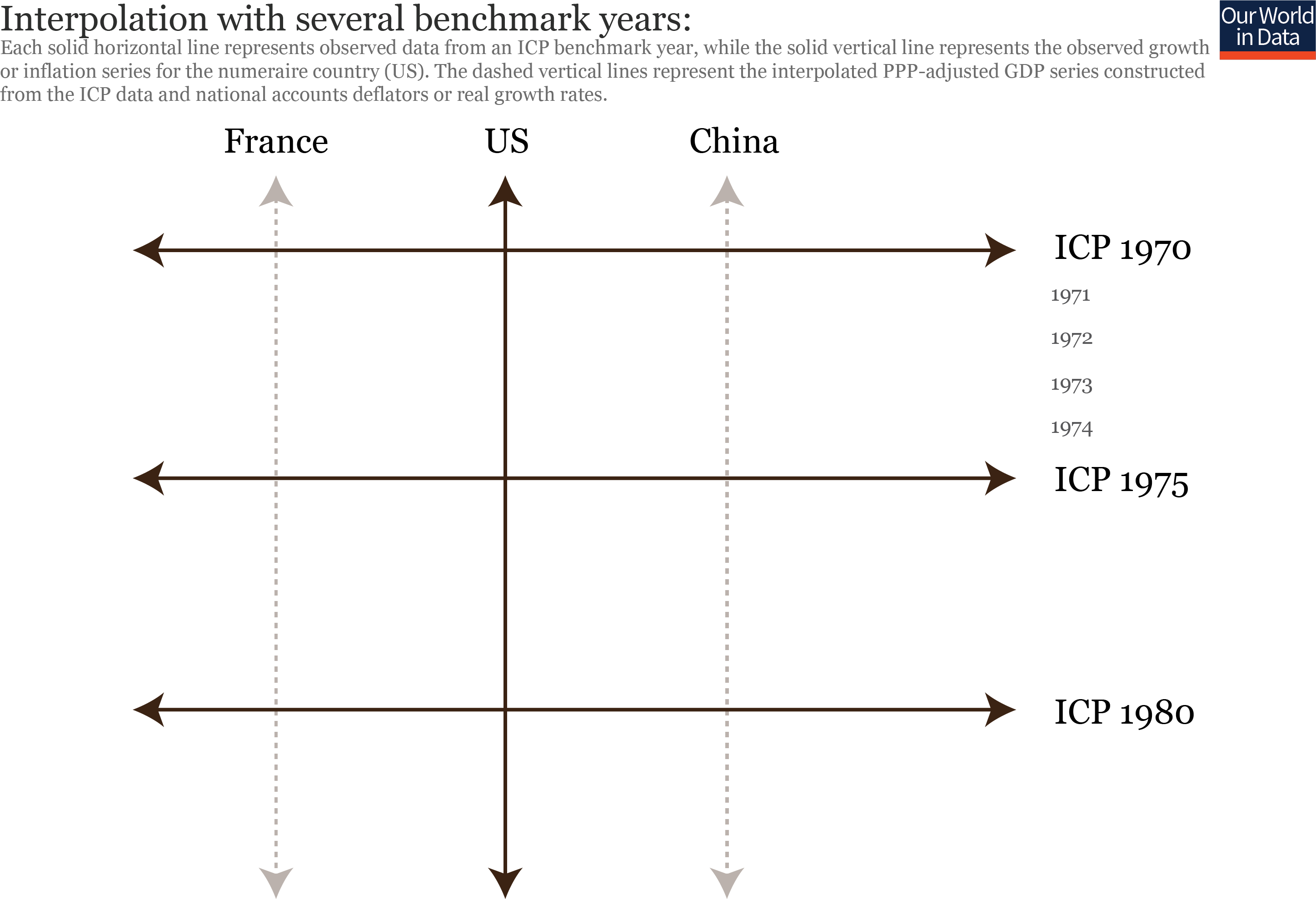The GDP- PPP adjusted will give a general picture of a country’s economic development such that one can rank them. However, it does not provide the precise economic level in detail like the individual household’s economic status.
Real GDP adjusts the nominal gross domestic product for inflation. However, some accounting goes even further, adjusting GDP for the PPP value. This adjustment attempts to convert nominal GDP into.

As the graph below shows, using PPP adjusted international dollars rather than US market dollars as unit of measure can make a huge difference. This article includes a list of countries by their forecasted estimated gross domestic product based on purchasing power parity, abbreviated GDP ( PPP ). Countries are sorted by GDP ( PPP ) forecast estimates from financial and statistical institutions that calculate using market or government official exchange rates.

For rankings regarding wealth, see list of countries by wealth per adult. See full list on en. GDP (Gross domestic product) is the monetary value of all goods and services produced in a period (quarterly or yearly).
In GDP, the output is measured as per geographical location of production. The CIA World Factbook calculates PPP to compare output among countries. Twenty-six economies have gdp (ppp) greater than $trillion. Eighty-eight have above Int.
The GDP-PPP adjusted will give a general picture of a country’s economic development such that one can rank them. Calculations of GDP based on market exchange rates tend to over-estimate the cost of living in poorer developing countries. This is called the Balassa-Samuelson effect.
To make a PPP adjustment for comparing GDP we build a basket of comparable goods and services and look at the prices of that basket in different countries. We updated the total GDP in PPP $ (inflation- adjusted ). Due to backward revisions in the population data, there are backward revisions to previous versions of the indicator.
It is calculated to eliminate the effect of price rise in GDP. In short, Real GDP is nominal GDP adjusted for inflation.
Read: Changes in Methodology of Calculating GDP ) Difference between Nominal and PPP GDP. The GDP figure is calculated and reported in a country’s own currency.
India’s Nominal GDP is reported in rupees. An international dollar has the same purchasing power over GDP as a U. In GDP, the output is measured as per geographical location of production.

Using GDP per Capita in $US, Norway’s national income is times higher than India. So we get quite a different outlook.
It is a measure of the rate at which the average person who lives in that territory produces economic output. GDP per capita in PPP is the most useful for comparing living standards. The standard answer to this question is the latest vintage of the Penn World Tables (PWT).
This dataset was the first to measure GDP as output valued under purchasing power parity ( PPP ) adjusted prices, taking into account the fact that real prices in the developing world are often lower than in the developed world. China is the top country by GDP based on PPP in the world. The top countries (others are the United States of America, India, Japan, and Germany) account for 48.
Purchasing power parity is a worldwide comparison of countries which implies the concept of different currency being in balance or stability. This concept inculcate on the same price of good in. The US has a PPP – adjusted GDP of $1 which has not changed since it is the reference currency. Comparisons of national income are also frequently made on the basis of purchasing power parity ( PPP ), to adjust for differences in the cost of living in different countries.
Vietnam GDP (Gross Domestic Product) was INT$705. Graph and download economic data for Global Economic Policy Uncertainty Index: PPP-Adjusted GDP (GEPUPPP) from to about uncertainty, GDP, and indexes. GDP at MER and PPP and Relative-price Adjusted GDP Gross regional or domestic product ( GDP ) is the sum of value added across sectors, which would also equal the sum of production for final demand across sectors.
That is, in a global comparison, the ranking of countries by PPP-adjusted GDP within a given region should remain unchanged with respect to the other countries in the region. This property of the ICP figures is referred to as “regional fixity.
This will suggest that X’s PPP-adjusted GDP should be lowered and Y’s PPP-adjusted GDP raised. Thus, other things remaining constant, X’s (PPP-adjusted) GDP would have risen compared to that of Y. Comparisons started with only ten countries, but the range of depth and coverage has since improved substantially. Now many comparisons over time uses PPP adjusted data, especially for per capita comparisons and for economic growth.
PPP adjusted data is also used in discussions on poverty because it reflects the purchasing power inside a country. Despite a low per capita GDP, its GDP (PPP) per capita is $2956.
There’s a distinct lack of parity in Oceania. Australia is first with $537 New Zealand is second with $4135. The next closest country is Palau at $195 more than $20less than New Zealand.